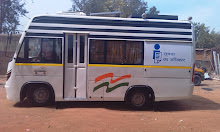Reetika Subramanian; Hindustan Times; Mumbai, March 23, 2011,
The incomplete retaining wall lining long stretches of the Mithi river is a stark reminder of a skewed ‘restoration and beautification’ plan. After the July 2005 flood, the planning authority’s knee-jerk reaction was to build the wall as an embankment to prevent river water from flooding the city.
Environmentalist Jagdish Gandhi filed a public interest litigation in the Bombay High Court challenging the construction of the 300-metre wall. He argued that the wall was hindering the ecosystem as it was built between the river and the adjoining mangroves.
“A three-member committee was set up to study the indignities that the river was subjected to,” said Gandhi, who is hoping for a demolition order in the next hearing. “The Mumbai Metropolitan Region Development Authority also built bunds, diverting the river flow at a 90-degree angle, which could prove dangerous during the monsoon,” he added.
From moving court to filing applications under the Right to Information (RTI) Act, citizens have kept the authorities undertaking restoration of the city’s water bodies on their toes.
For Walkeshwar-based software engineer Ashish Tiwari, RTI became a powerful tool to seek information on the cost incurred by the state’s Directorate of Archaeology and Museums on the first phase of the restoration and conservation work at the Banganga tank. “The work that started in 2007 did not adhere to the norms of conservation,” said Tiwari, adding that even after more than Rs 2 crore were spent, the well-preserved temple stones bearing age-old carvings were damaged and abandoned. “When I demanded information related to the cost of materials and stones, the Archaeological Survey of India responded that ‘since the entire expenditure of the material purchasing was done by the contractor, we are unable to know the specific actual cost or expense for purchasing the stone and do not have copies of the bills’.”
It was a similar experience for Pamela Cheema, coordinator, IIT-Powai region, of the non-profit body AGNI. She wrote to the civic body seeking justification for the depletion of the green cover at Powai Lake as well as the need for a musical fountain. “Not once did I get a convincing response. I was only told they ‘have noted my objections’,” she said.
Even as the authorities undertake restoration work at wetlands, activists and residents claim that the work is not commensurate with the budget. “Concrete structures are no answer to ecological concerns,” said Namrata Kaur Mahal, conservation architect, The Energy and Resources Institute.






























